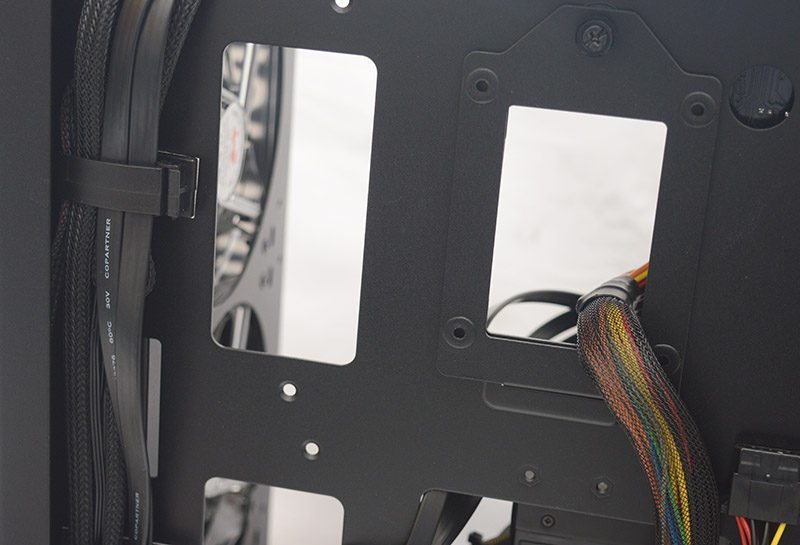Zoostorm Inferno GTX 1080 Gaming PC Review
John Williamson / 8 years ago
A Closer Look
The In Win 805 is one of the most spectacular cases ever devised and the tempered glass tinted side panels are incredibly eye-catching. This inspired other companies like Phanteks to follow suit and it’s clear that tempered glass is becoming extremely popular among hardware enthusiasts. Unfortunately, it’s quite difficult to photograph due to reflections but rest assured, the system is gorgeous. As you can see, the tempered glass is held in place with four screws and slides between two feet at each side.
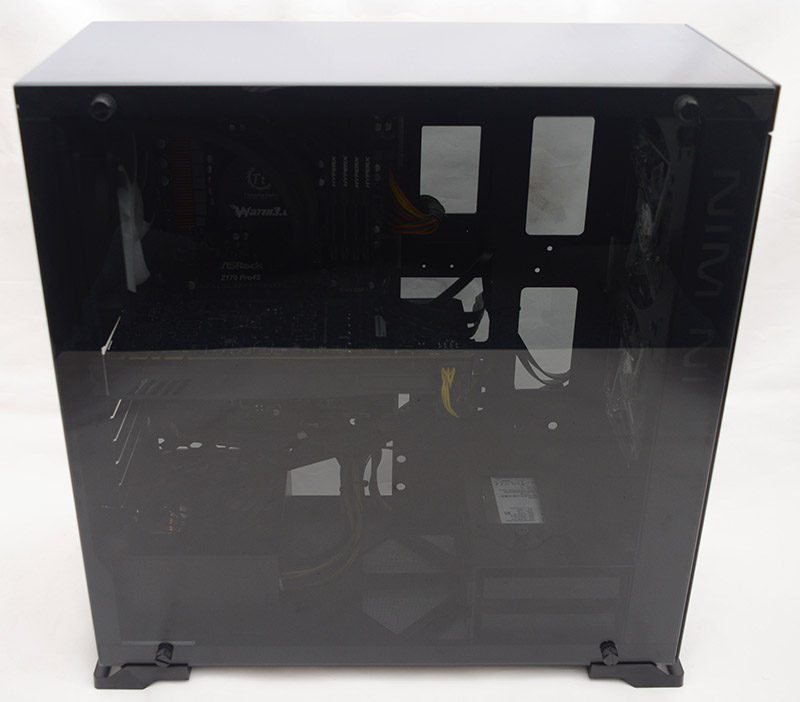
Once powered on, the In Win logo and dual 120mm fans illuminate which creates a striking finish. Sadly, the main components are obscured by the glass’ finish and there really needs to be some LED strips to properly display the attractive build. This wouldn’t impact on the retail price too much and it’s bound to enhance the system’s aesthetic appeal.
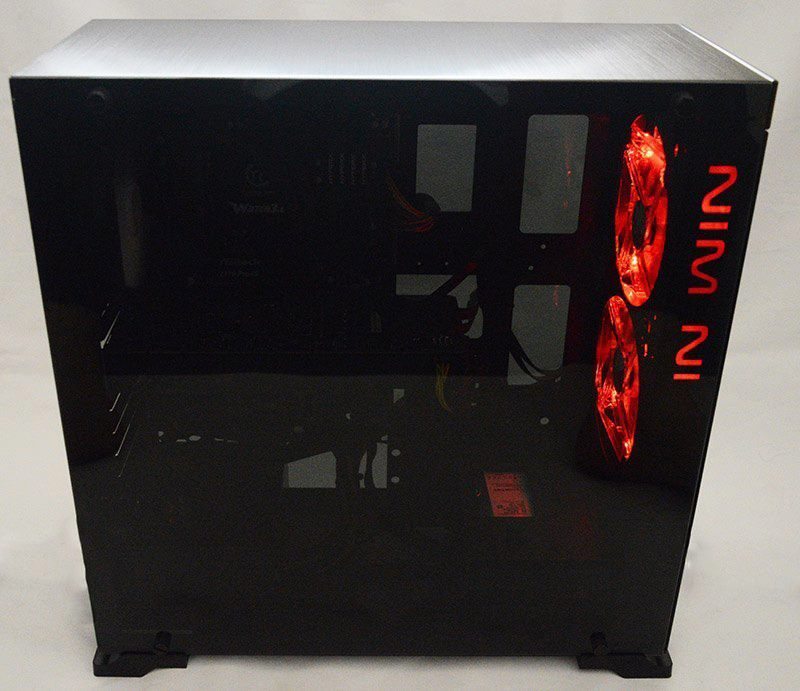
After carefully removing the glass side panel, we can see the system’s internals for the first time. Even though I’m really fond of In Win cases, the lack of rubber grommets and reliance on large cut-outs for cable management isn’t ideal. It also complicates the build process and makes it difficult to achieve clean cable runs. Despite this, the stealth black colour scheme looks superb and compliments the glass side panel. On the other hand, I don’t think the motherboard’s heatsinks are a good fit and something like the MSI Z170 PRO GAMING CARBON would have been a better choice.
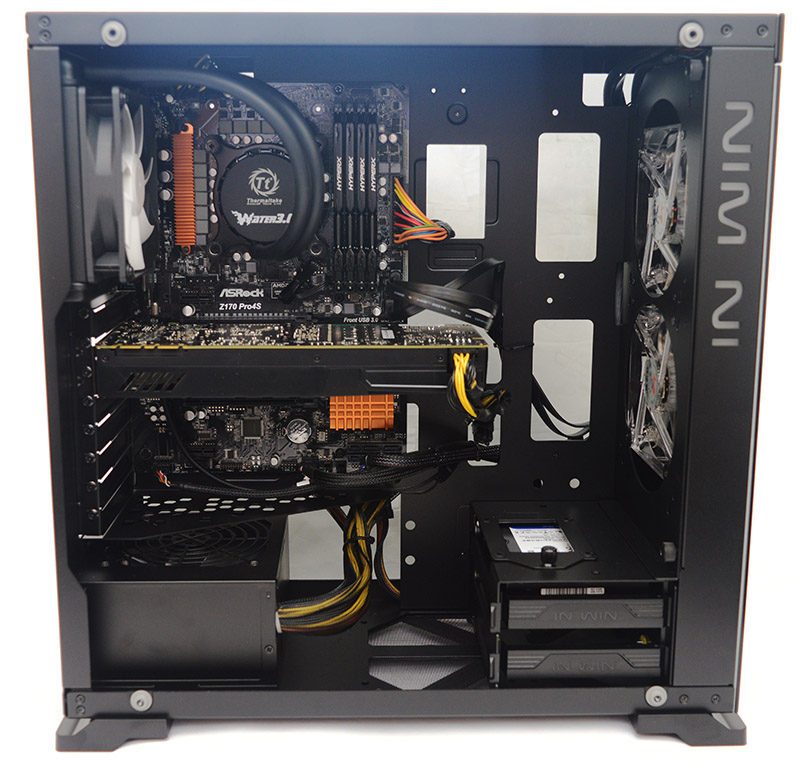
From this angle, it’s evidently clear that the CPU pump cabling has been routed in a proficient manner, and the tubing run looks rather nice. Additionally, the memory’s heat spreaders opt for a sleek, understated design which matches the water cooling hardware and graphics card. While the USB 3.0 header and SATA cable could be positioned slightly better, it’s relatively good given the chassis’ restrictions.
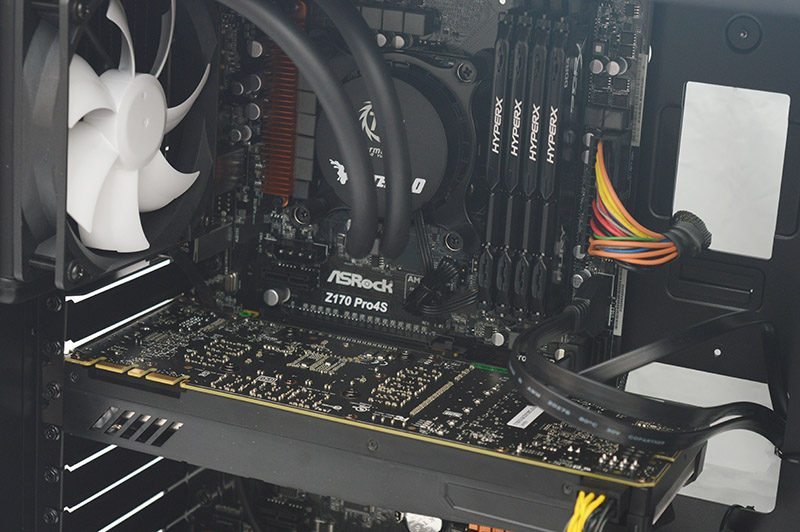
The system’s FSP 500-watt power supply has an 80+ Bronze efficiency rating and features a non-modular design. This really increases the difficulty when performing effective cabling management and I strongly believe it’s a significant oversight because of the glass side panels. For example, every single cable can be seen on the opposite side which means it’s imperative to use the smallest amount possible. Despite this, Zoostorm has managed to cope with this headache rather well.
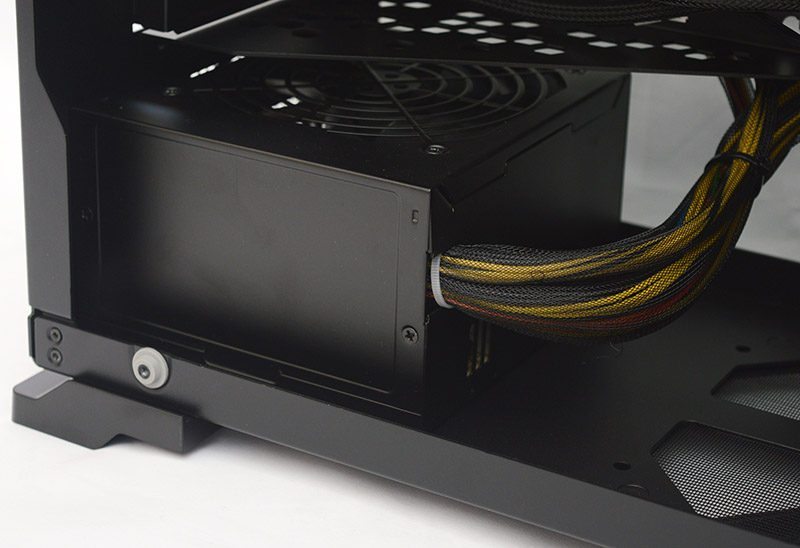
On a more positive note, the inscribed In Win drive bays look fantastic and you’re able to increase the system’s storage quite easily at a later date.
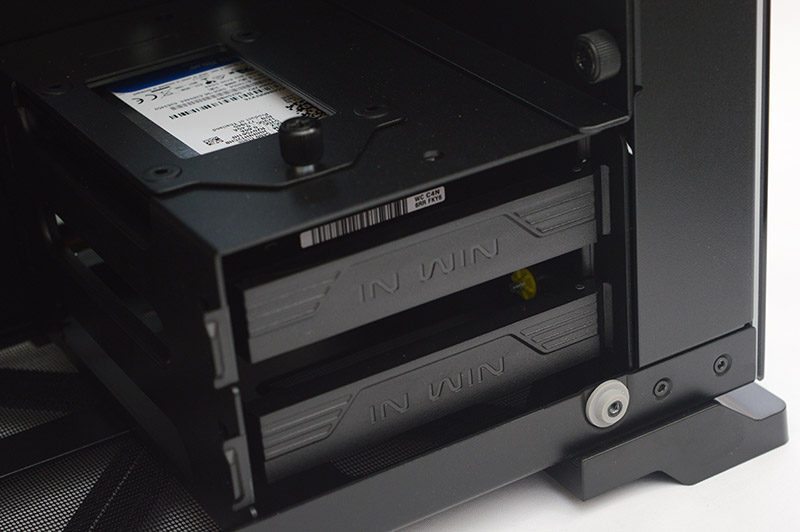
The graphics card’s power cabling is good and Zoostorm has opted for tight zip-ties to keep everything in its optimal position.
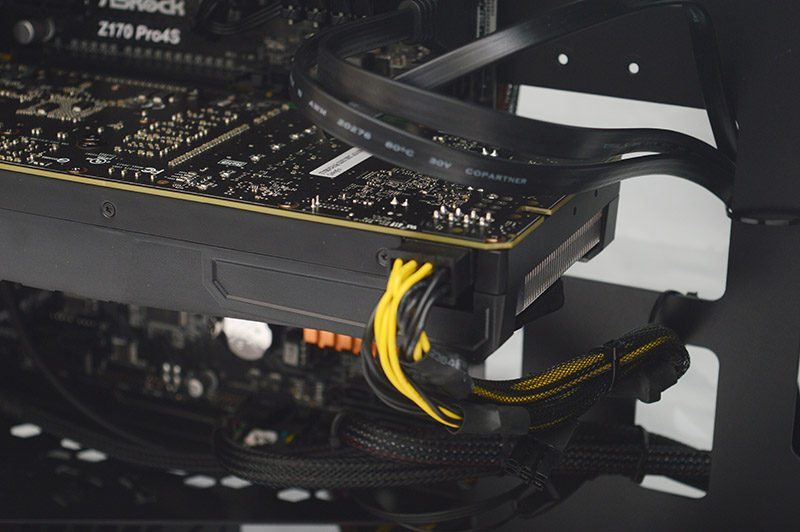
Towards the motherboard’s front panel section, the cabling is messier than I’d hoped for and it’s probably going to irritate some users who love a clean aesthetic around the power supply. Once again, the chassis’ internal cabling and unusual design prove to be a problem area.
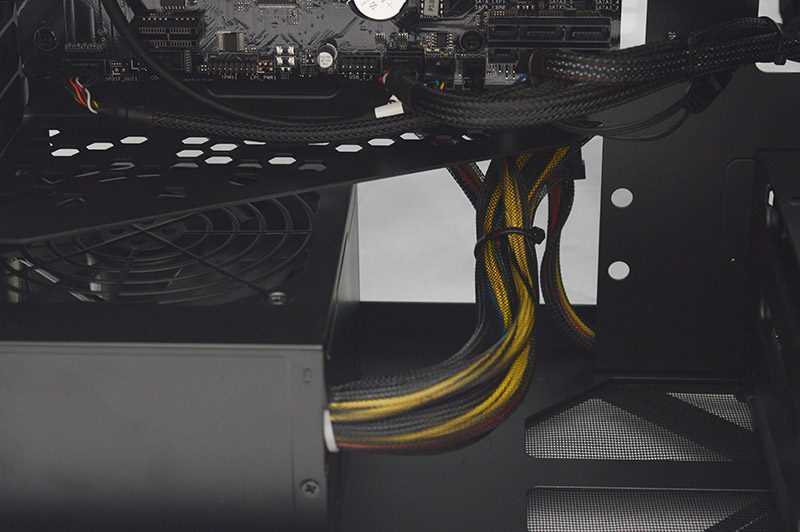
Included with the system is one of the most affordable versions of the GTX 1080 by KFA2 which features a basic blower design. While this doesn’t match the premium quality of NVIDIA’s Founders Edition, it does the job and the black colour works very well alongside other components.
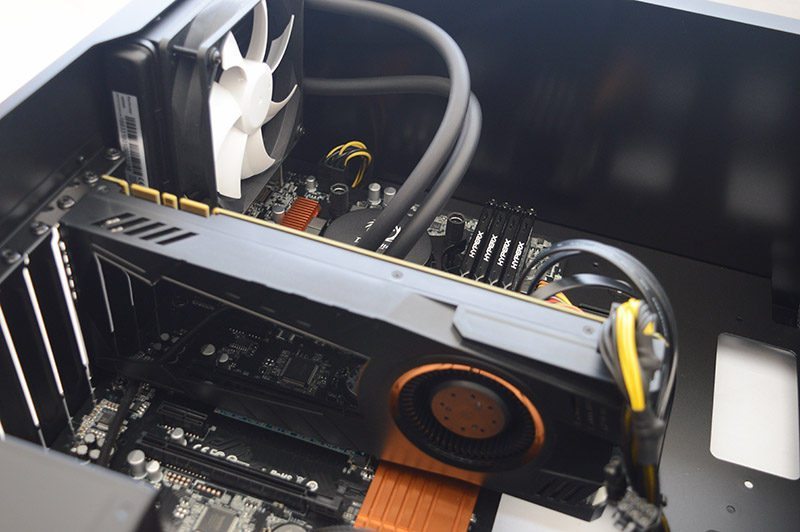
As previously mentioned, the front cable management isn’t perfect but it’s mostly down to the non-modular power supply and huge, visible cable management holes. The rear section is much more positive and demonstrates a high level of technical expertise. Despite having to deal with plenty of power cables, everything has been tied down in a neat manner.
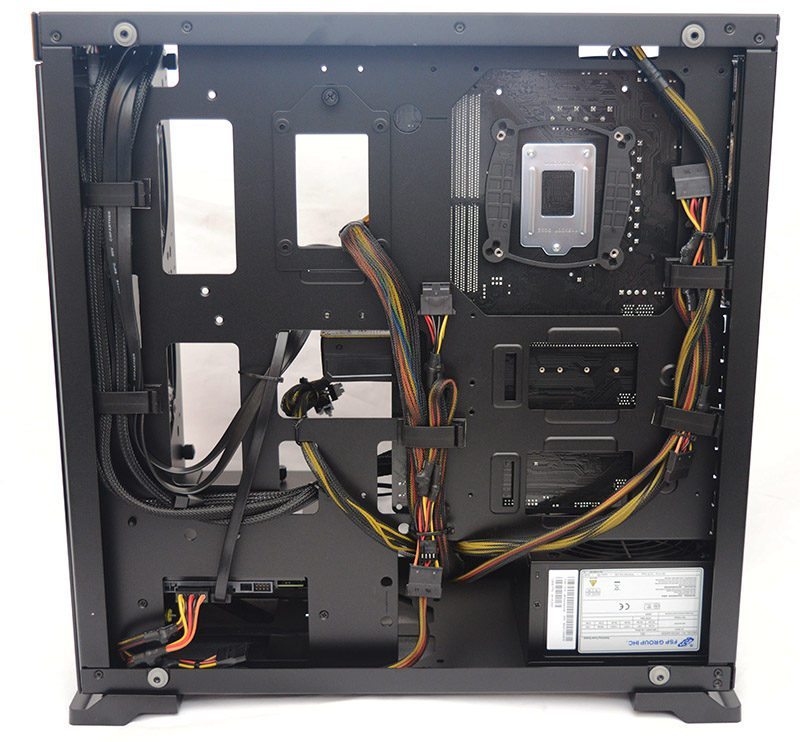
Here we can see the excess SATA, Molex and fan cables have been tucked away which allows you to easily attach the glass side panel.
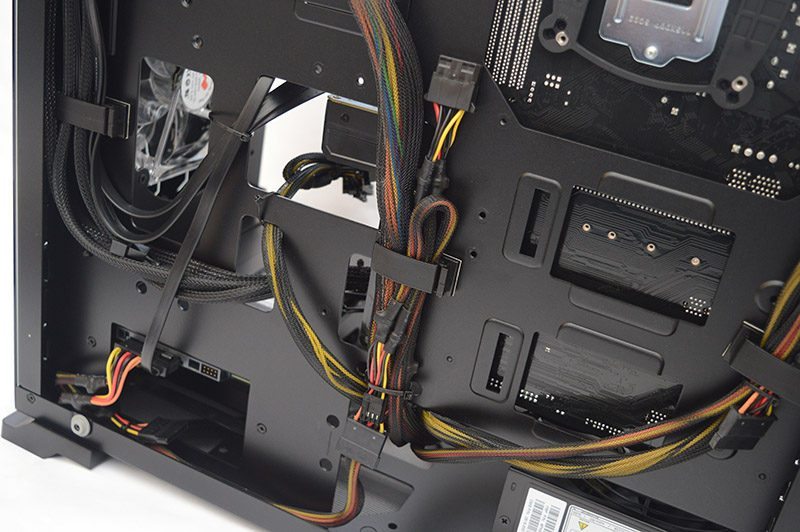
On a similar note, the 8-pin EPS, and spare cables remain within the confines of the chassis via a logical cabling arrangement.
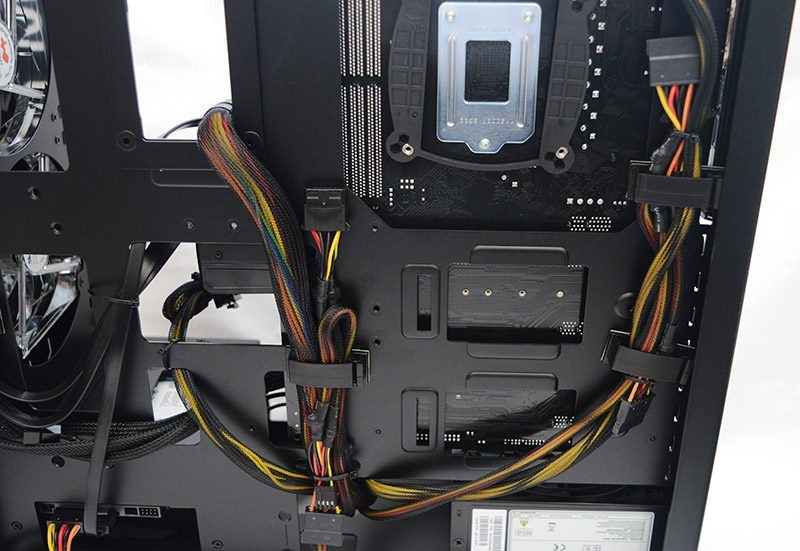
Finally, the front panel cabling is held in place using integrated clips and I’m really impressed with the neat finish given how many cables surround the rear chamber.
